Life in the day of a Fritillary
There’s a certain Passionflower vine that grows in an unlikely crack in our pool deck.
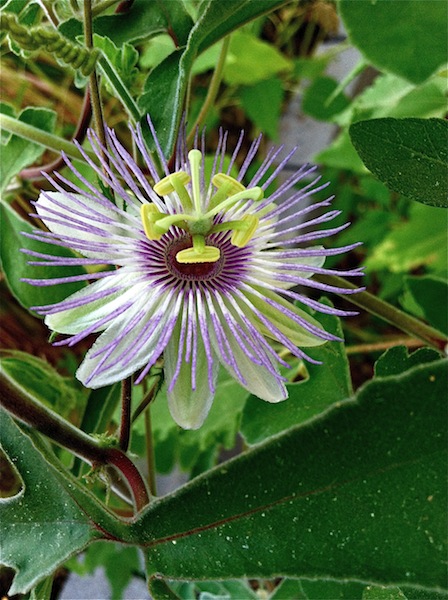
Sonoran desert Passion flower, Passiflora foetida, a rambunctious native vine with a weird (but edible) fruit.
It’s the most enduring of all of the tough volunteer passiflora vines that inhabit our yard, exposed to blazing sun each summer afternoon, and even surviving winters with killing frosts, its roots shielded from chill and drought by the aging cement deck. This plant is crammed into the same seam as two other stubborn, spiny volunteers, a Palo Verde tree and a wolfberry, which the vine uses unashamedly for support while clambering up to the sun. This chimæric tangle of species is inconveniently located — crowding an outdoor table and the barbecue grill — but it provides prime nature-watching: towhees scrabble around looking for seeds underneath, whiptail lizards flick their tongues at ants, desert cottontails crouch in its shade, and cactus wrens glean its stems and leaves for insects.
All of the following photos of the Gulf Fritillary’s (Agraulis vanillæ) life cycle were taken on this scrubby Passion flower vine clump in our Phoenix-area back yard. (All photos A.Shock — be sure to CLICK TO ENLARGE, especially the last portrait!)
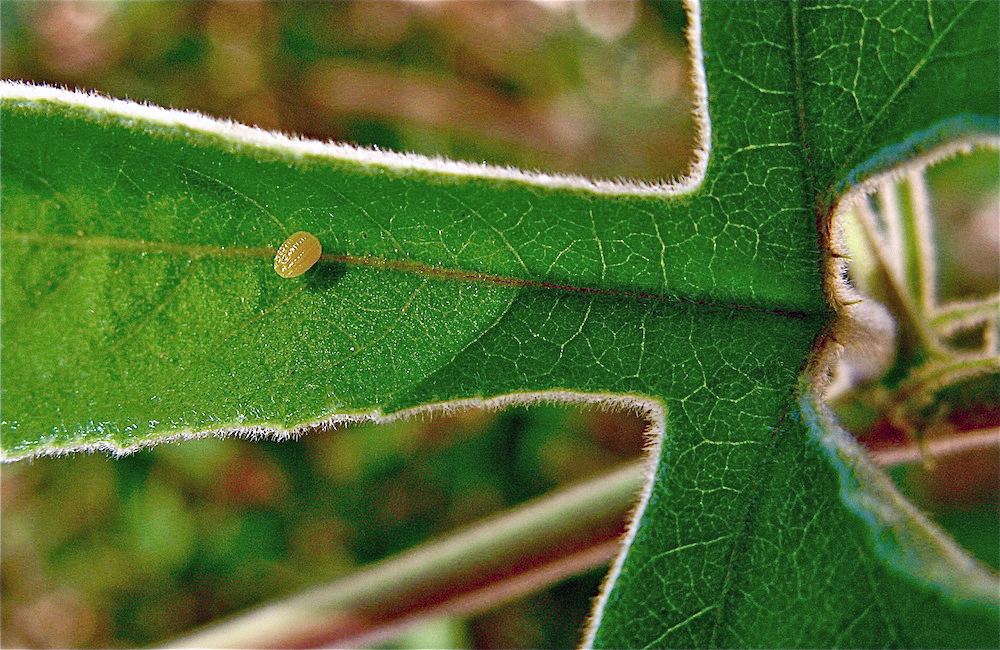
A single egg like a tiny ear of yellow corn. Each is laid one at a time by a hovering, nimble female Gulf Fritillary. The egg is the size of a dull pencil point.
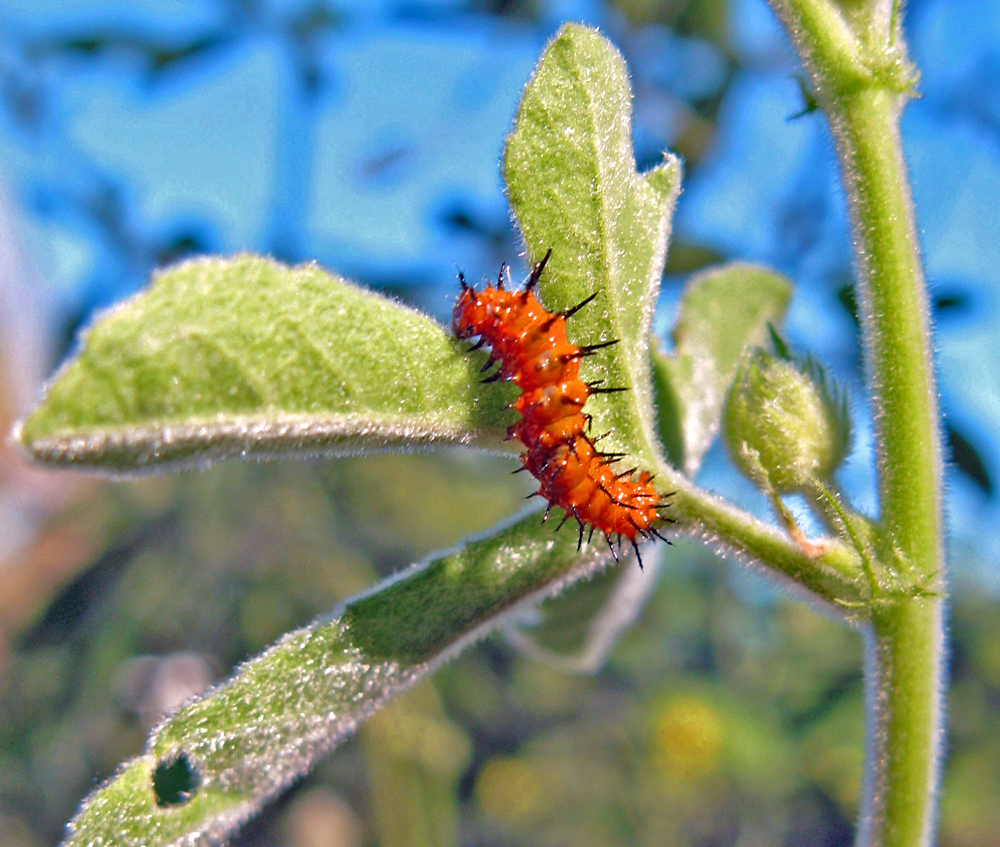
A spiky red larva hatches from the egg and begins to eat and grow. The bright warning colors and spines advertise its body’s ability to concentrate toxins from passionflower leaves. If not discouraged by a human guardian or natural predator, fritillary larvæ can denude an entire plant in a matter of days. When it’s finished eating, the caterpillar anchors itself to its food plant, hangs head downward, forms a brown chrysalis, and pupates.
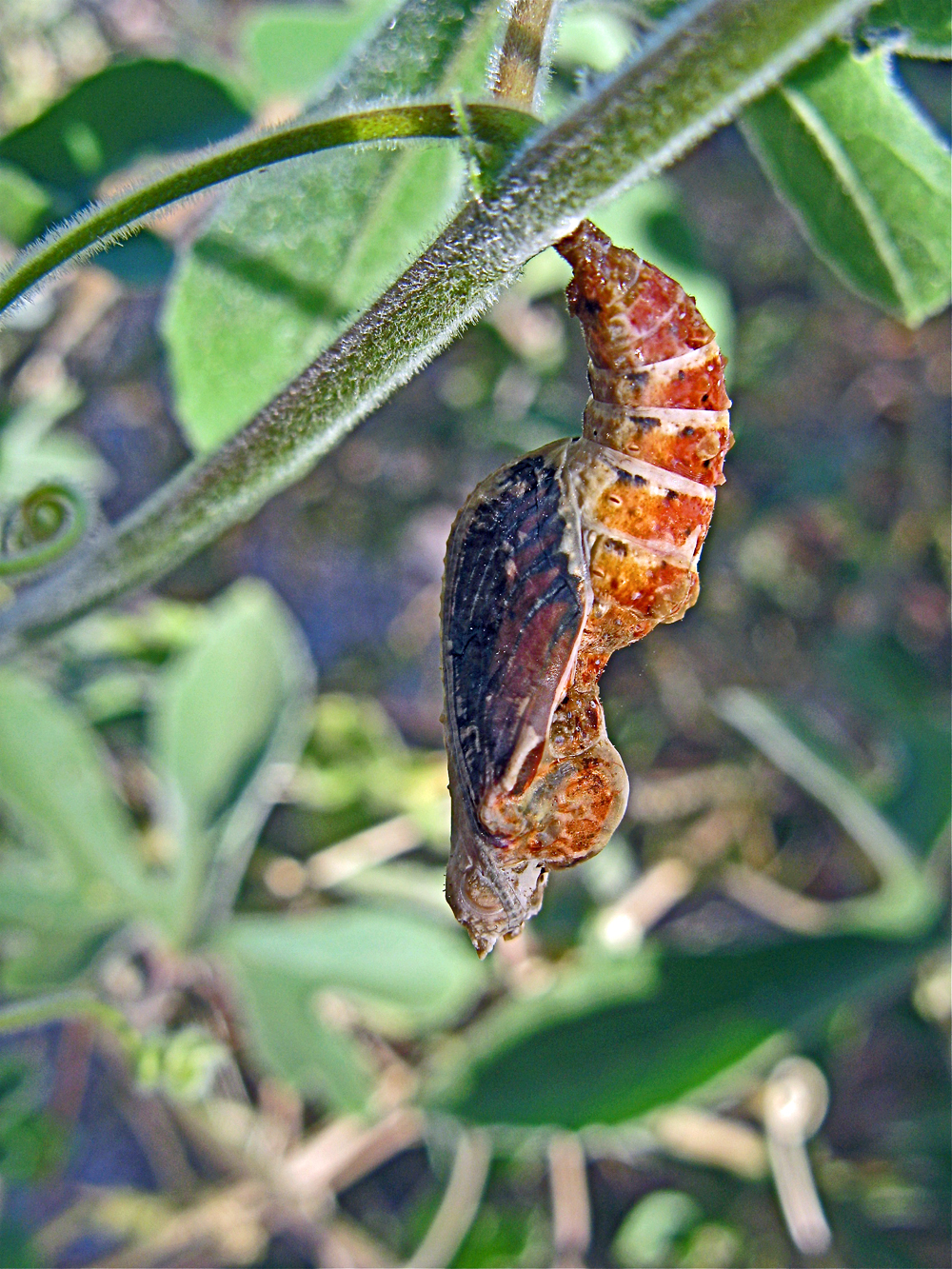
As the chrysalis nears maturity, it becomes transparent and reveals the new butterfly’s colors. The dark sheath on the left side is the wing.
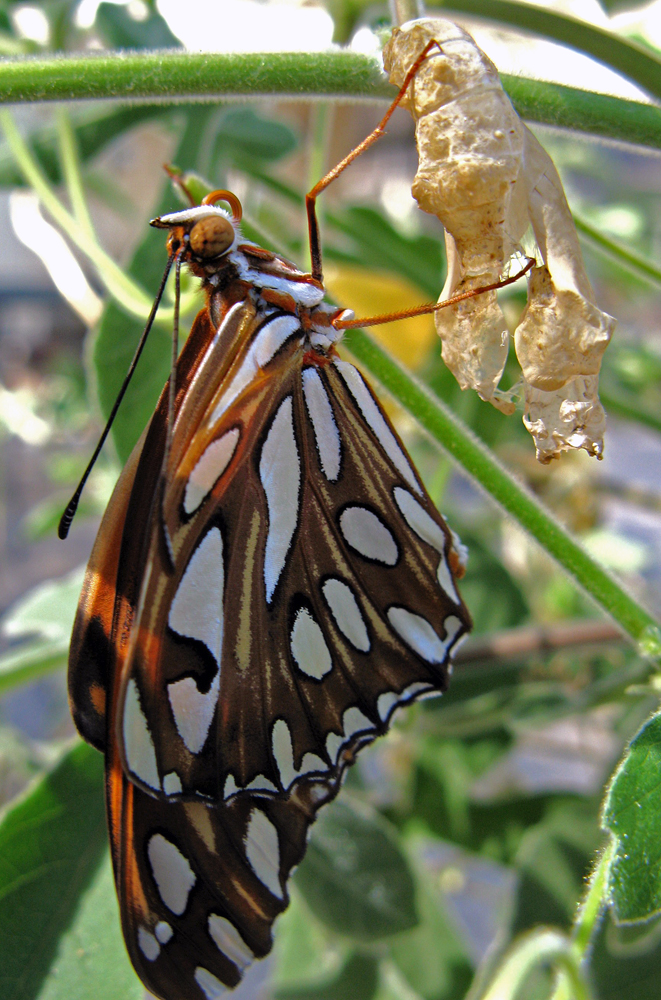
The chrysalis splits open, and the new butterfly hangs in the shade, pumping up its wings until they’re sturdy enough to fly.

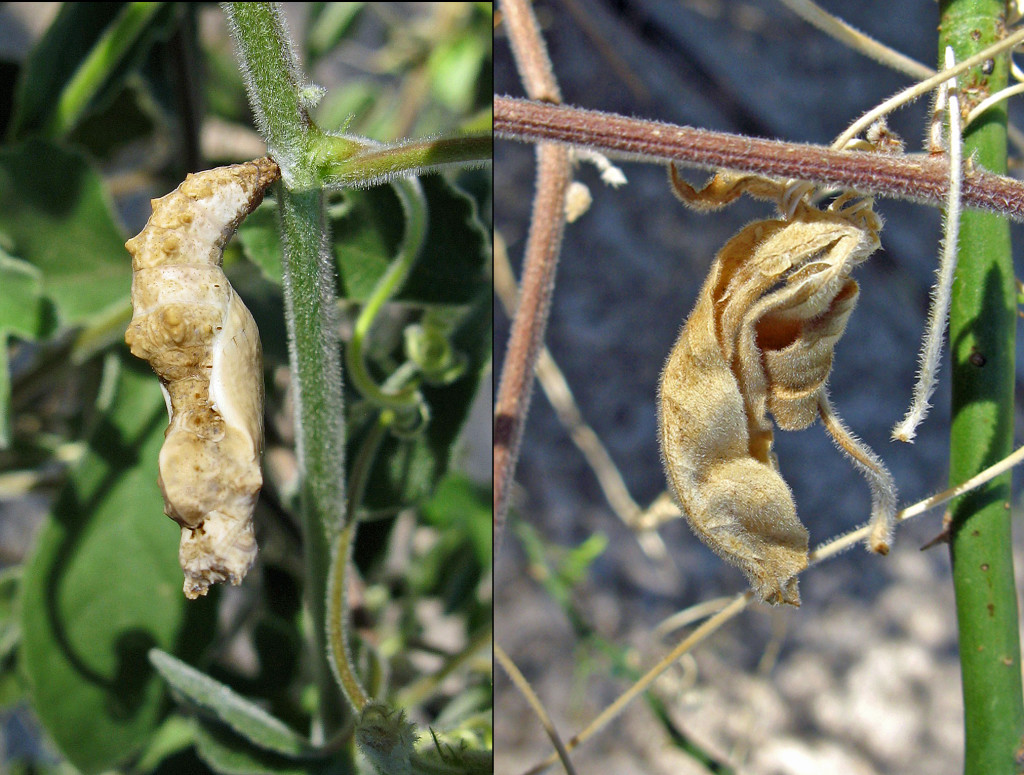


These are some gorgeous photos!
Thanks, Roberta! Grateful for a stationary subject — once these fritillaries are on the wing, not so easy to snap!
Wonderful info on the life cycle of the Gulf Fritillary !! We have them in abundance here in South Texas. And just last week I saw one trying to mate with the recently emerged as you describe.
That day there were so many on the ground, taking up minerals. Easier to photograph but such an ugly background !!!
Enjoy your photos on Instagram and your journal is fascinating !
Thanks, Linda. I’m so glad you found your way to my Three Star Owl journal! See you on Instagram!